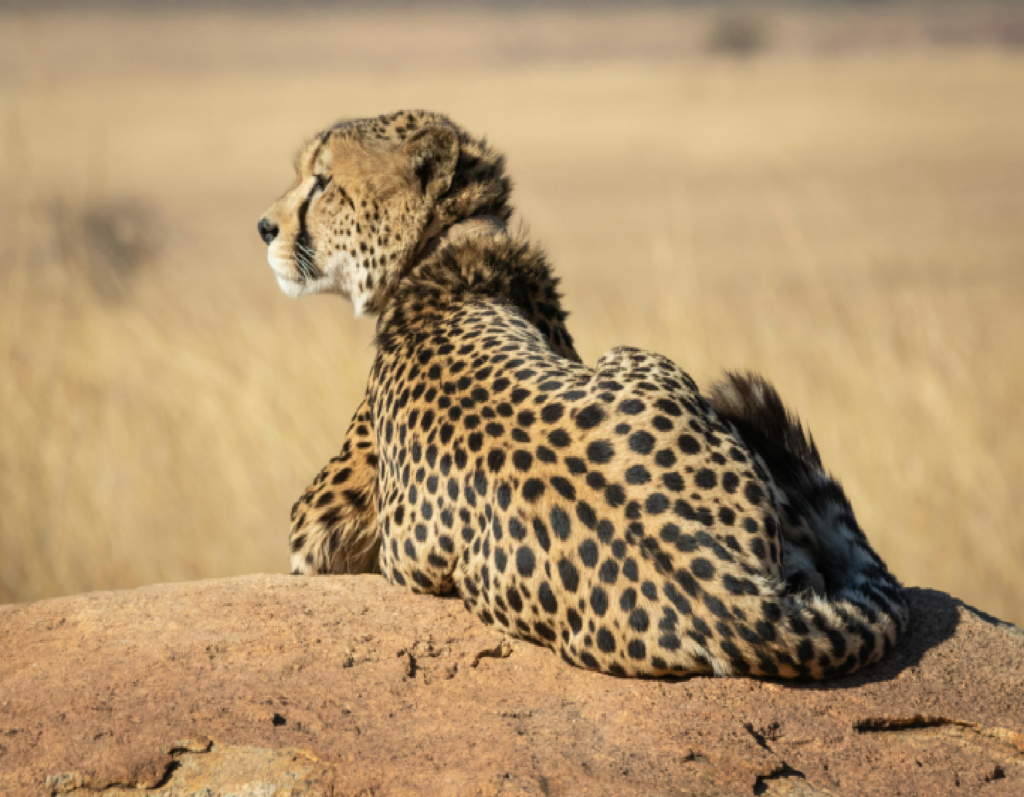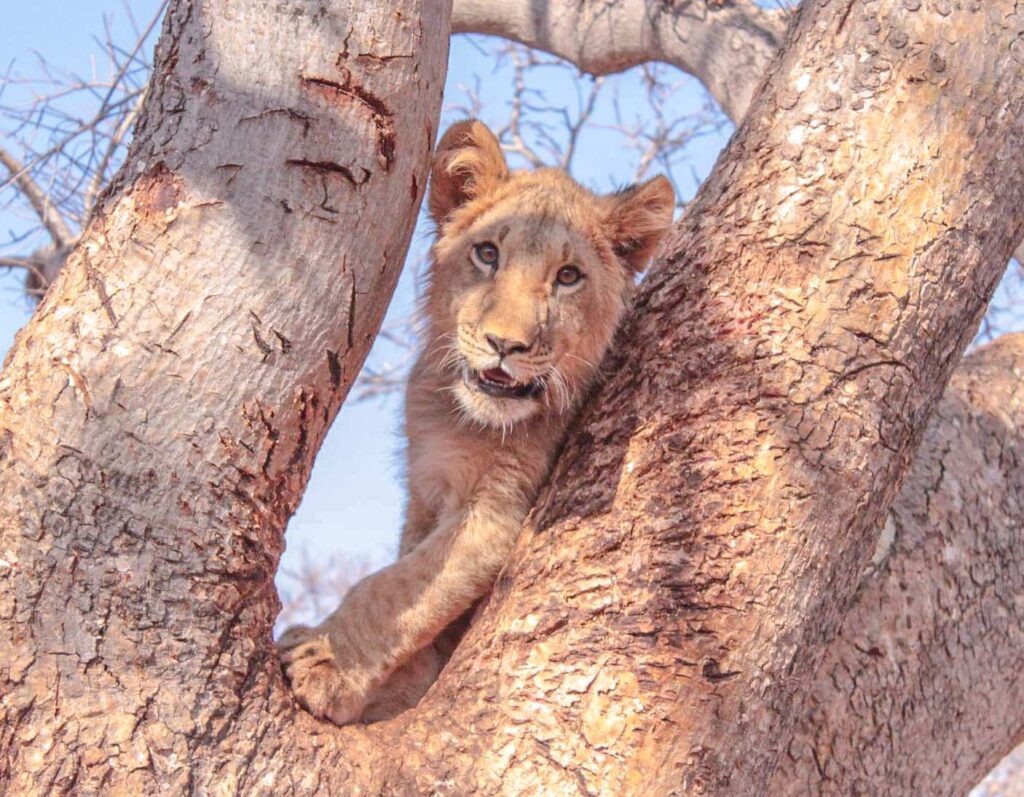Samburu – Africa’s hidden gem
Samburu, Africa’s off the beaten path hidden gem. Located on Kenya’s northern safari circuit where the vibrant green flats give way to arid scrubland lies Samburu National Reserve. The reserve is famously named after the local red-robed pastoralist Samburu tribes. Also known as the ‘butterfly people’ due to their colorful tribal attire. North of the equator and surrounded by a volcanic mountainous backdrop, Samburu is a semi-arid 165km plain with pockets of red dust, kopje’s, granite out crops and immense acacia trees charmingly poker dotting the landscape.
Giving life to the National Reserve is the Ewaso Nyiro River. Meandering through the southern part of the reserve and sculpted by a green oasis of palms and lush vegetation, a haven for local wildlife.
Living in manyattas (villages), the Samburu people locate themselves within the reserves mosaic of surrounding conservancies alongside their livestock which act as buffers, extending habitats available for wildlife and touristic pursuits. Governed by the Northern Rangelands Trust, these conservancies offer close-up safari experiences and opportunities for great community conservation and engagement.
For years to come and for all the wildlife lovers out there today, Samburu is certainly somewhere to consider visiting. The reserve is a haven for traditional African species such as elephants and predators such as leopard and lion. There is also a diverse bird life with more than 450 species in population to view through your binoculars. However, the reserve stands out more excitingly due its quasi-endemic unique wildlife species that have adapted to the reserve’s diverse habitats.
Samburu’s Special 5
We’re all aware of Africa’s great ‘Big 5’ and our desire to see this charismatic megafauna by numerous tourists booking their safari experience. But have you ever heard of the Samburu ‘Special 5’? This catch phrase offers Samburu’s more exclusive wildlife checklist to tourists in this arid yet beautiful part of Kenya.
First up in this special group is the Gerenuk, a member of the antelope family. At first sight looks like a stretch out impala. However, these strange looking impalas are designed to stand on the hind legs and use their long neck to nibble on the furthest branches and leaves, living their lives in graceful yet funny ways.
Largest of the three-zebra species, the Grevy’s zebra is second on the special list. Sadly critically endangered, mainly due to habitat loss and lack of food. Distinguishable from their cousins, the Grevy’s zebra have close-set and neatly painted’ lines, big round ears and different colored muzzles and are attributed as the most attractive species of zebra.
This also goes for the reticulated giraffe, the third member of the special 5. This rare species of giraffe gets its name from the standout and beautifully rich orange and brown patch work. This unique pattern is clearly defined by a network of bold white lines.
Another member of the special 5, defined as a separate species from the common ostrich is the Somali ostrich. This flightless, long-legged bird is native to the horn of Africa and can reach a height of around 275cm. Otherwise known as the ‘blue ostrich’ due its vibrant blue neck color especially during breeding seasons. The Somali ostrich will often reside within thickly vegetated areas of the horn of Africa. However, are still easy to find on safaris in Samburu National Reserve.
Lastly, rounding up the special 5 group is the common beisa oryx. The beisa oryx is mostly famous for its fringed ears and long muscular body. This subspecies of East African oryx is a very striking antelope common across Samburu. Often found grazing across semi-arid grasslands on leaves, fruits and buds. As a prey animal, the beisa oryx uses its 80cm long horns to defend itself against predatory animals around them.
More unique animals
Highlighting the diversity in wildlife across the reserve and unlike the large beisa oryx, Samburu is home to a tiny antelope species called dik-diks. These 40cm tall antelopes are spotted in arid Samburu savannahs or dense thickets of shrub and woodland. Dik-diks are an admired species of antelope to view on safari due to their small stature and big eyes. They also have an elongated snout which is an evolved cooling mechanism adding to their unusual yet adorable look.
Spotted up in acacia trees whilst on safari, you will be bound to see flocks of vulturine guinea fowl. Named after a vulture due to their featherless heads, neck and large piercing beak. The vulturine guinea fowls slim neck projects from a plumage of long glossy blue and white hackles. The birds are commonly spotted due to their bright cobalt blue chest.
Large elephant population
Perhaps the most beautiful wildlife sighting to see in Samburu, made up of mothers, aunts, daughters and sisters. These are the members of the Samburu elephant herds lead by a single matriarch, other females and their young. There are also 120 adult bulls that roam the Samburu ecosystem and dependent on the rains, 500 more members join from surrounding conservancies to socialize. This subsequently makes a safari experience in the Samburu and the national reserve one of the best places to view African elephants.
Sadly, these magnificent creatures still remain primary targets for poachers. Also the human & wildlife conflict with local farmers and their crops continue to threaten their lives. Therefore, the Samburu elephants are protected by Elephant Watch Camp which is closely connected with Save The Elephants, both located in and near to the reserve. Luckily, GPS tracking has been beneficial in tracking and understanding the sheer intensity of illegal killing and boundaries at which it occurs within the reserve.
Considering a once in a lifetime experience across one of Africa’s wild savannahs? Offering you a diverse African landscape full of both common and rarer species of wildlife, stand out safari excursions and luxurious tented camps to return to, the Samburu National Reserve is just for you.
Ready to experience your very own Samburu safari tour in style? Then you’ve come to the right place. At Brady’s Wildlife Adventures, we offer a variety of Samburu safaris throughout both the dry and green season to suit your preference.






